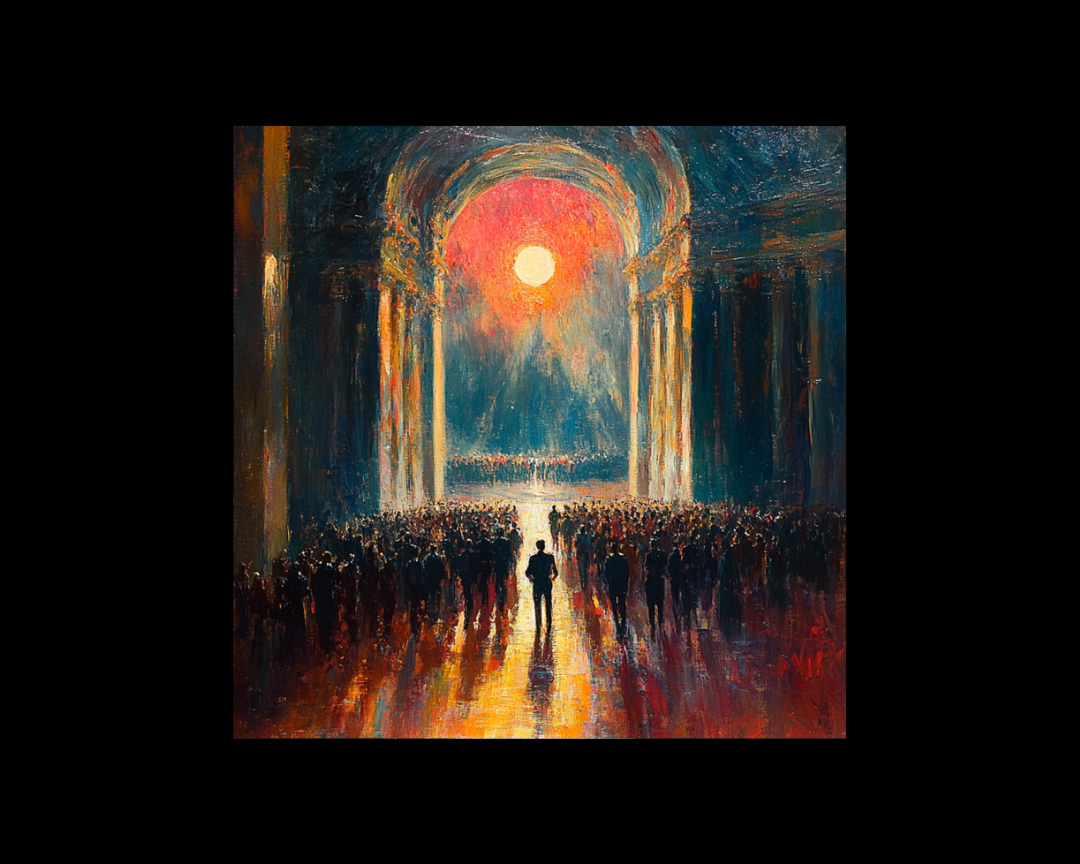Brand Storytelling: 5 Stories Your Brand Could Use
Storytelling is a powerful tool that can convey information, trigger emotions and inspire action. Successful brands have long used the benefits of...

Modern publishing, high-concept fiction continues to dominate bestseller lists, attract film options, and command impressive advances. As both professional and aspiring writers navigate this marketplace, understanding how to craft compelling high-concept stories has become an essential skill. But what exactly makes a story "high concept," and how can you develop this approach in your own writing?
At its core, a high-concept story is built around a premise so distinctive and intriguing that it can be communicated in a single sentence.
"High-concept fiction is often a concept that hasn't been done before, and might be quite unbelievable – something that wouldn't necessarily happen in everyday life... high-concept fiction is something you can't imagine happening to you, but you can envision it happening just out of reach. Something memorable that makes you sit up and listen."
While "low concept" stories might reflect everyday experiences, high-concept narratives typically explore extraordinary ideas, situations, or worlds that immediately capture attention and curiosity.
Most high-concept ideas begin with a question: "What if...?" This simple phrase opens the door to endless possibilities that challenge reality or introduce fascinating hypotheticals:
Writer's Tip: Keep a dedicated "What If" journal. When inspiration strikes, jot down your most outlandish questions without censoring yourself. Review these regularly, looking for ideas that continue to intrigue you weeks or months later.
The hallmark of high-concept fiction is its ability to be summarized in a brief, compelling pitch. This "elevator pitch" becomes invaluable throughout the publishing process:
Writer's Tip: Test your pitch on people outside your writing circle. If they immediately respond with interest and questions about the story rather than asking for clarification of the premise, you're on the right track.
In many successful high-concept works, the title itself communicates the core premise:
Writer's Tip: Brainstorm titles that encapsulate your premise. While your publisher may ultimately change your title, having a strong title that communicates your concept will help you pitch and focus your manuscript.
As literary agent Juliet Mushens points out, a common pitfall for writers is having only "half an idea" — the initial high-concept premise without a compelling execution. The crucial second half is what she calls the "and then what?"
Who you place within your high-concept world can make or break your story. Ask yourself:
Writer's Tip: Try writing the same high-concept premise from three different character perspectives in short scene sketches. You may discover that certain character backgrounds, personalities, or life situations dramatically enhance your concept.
The best high-concept fiction features conflict that emerges organically from the premise and character combination. Forced conflict feels artificial and can undermine even the strongest concept.
Writer's Tip: Create character relationship maps showing pre-existing tensions, conflicts, and alliances among your cast. The intersections of these relationships with your high-concept premise will reveal natural conflict points to explore.
Here's a useful formula for developing your high-concept idea:
In a world where [premise], [specific person] [does an antithetical thing].
For example:
Writer's Tip: Complete this formula for your concept, then create three variations changing either the character or their action. This exercise often reveals stronger possibilities you hadn't initially considered.
Here are some methods to practice.
High-concept fiction is often pitched using the "X meets Y" formula, combining two well-known concepts to create something new. However, this technique requires careful consideration:
Writer's Tip: When using "X meets Y," ensure you're combining elements that create genuine creative friction. "Pride and Prejudice meets zombies" works because the collision is unexpected and generative. "Gone Girl meets The Girl on the Train" doesn't add much value because they occupy similar thematic territory.
Take a familiar concept and completely invert a key element:
Writer's Tip: Identify the standard tropes in your genre, then systematically reverse them. List five major reversals and develop mini-premises from each. One will often stand out as particularly compelling.
Take a current technology, social trend, or scientific development and extrapolate it to its logical—or illogical—extreme:
Writer's Tip: Subscribe to scientific journals, technology newsletters, or futurist publications. Create a monthly ritual of selecting three emerging trends and extrapolating each to an extreme scenario 10, 50, and 100 years in the future.
Make sure you consider the big picture as you work on high-concepts.
While high-concept fiction often appears in speculative genres like science fiction and fantasy, it can exist within any genre:
Writer's Tip: If your high concept feels too outlandish for your intended genre, look for real-world anchors or emotional truths that can ground the premise. Conversely, if your concept feels too ordinary, seek ways to heighten the stakes or introduce more provocative elements.
Some high-concept ideas may be creatively brilliant but commercially challenging. Before investing months in a manuscript, consider:
Writer's Tip: Create a mock book cover and marketing copy for your high-concept idea. Show it to readers in your target demographic. Pay attention to their immediate emotional reactions—excitement indicates commercial potential.
Now, there are some things to avoid.
One of the biggest risks in high-concept fiction is allowing the premise to overwhelm character development. Readers may be drawn in by your concept but will stay for compelling characters with emotional depth.
Writer's Tip: For each major character, develop detailed emotional responses to your high-concept situation that go beyond the obvious. How does your character's specific background, trauma, desires, and fears create a unique reaction to the situation?
Some high-concept premises are fascinating initially but cannot sustain interest over a full-length novel. The concept becomes exhausted, and the story begins to drag.
Writer's Tip: Develop your concept with built-in evolutionary stages. How does your premise evolve and reveal new dimensions as the story progresses? Map out these evolutions before drafting to ensure sustained interest.
High-concept fiction often requires significant world-building, but excessive exposition can kill narrative momentum.
Writer's Tip: Use the "iceberg method" of world-building—show readers only 10% of the world you've created, keeping the remaining 90% beneath the surface to inform your writing. Integrate world details through active scenes rather than exposition blocks.
The most compelling high-concept fiction often emerges from an author's deep personal interests or concerns:
Writer's Tip: Create a list of your top five obsessions, fears, or fascinations. For each, develop three "what if" scenarios that would allow you to explore these preoccupations through fiction.
Look outside your primary field of interest to find unexpected connections:
Writer's Tip: Once monthly, randomly select two unrelated areas of knowledge (use Wikipedia's "Random Article" feature if needed). Force yourself to develop a high-concept premise that connects these disparate fields.
Every step of the way, you'll want to keep some quality checks in mind.
As you develop your manuscript, regularly check that you haven't drifted from what makes your concept unique. Plot complications should enhance rather than dilute your central premise.
Writer's Tip: Write your one-sentence high-concept pitch on a notecard and keep it visible while writing. At the end of each writing session, ask yourself if what you've written strengthens and explores this core concept or distracts from it.
While high-concept fiction leads with premise, lasting impact comes from thematic resonance. Your extraordinary scenario should illuminate something meaningful about the human condition.
Writer's Tip: Identify 2-3 universal themes your concept naturally explores. For each theme, develop contrasting character perspectives that create dialogue around this theme rather than presenting a single viewpoint.
High-concept stories create implicit promises to readers. Your ending must deliver on the questions raised by your premise while potentially subverting expectations.
Writer's Tip: Draft three different endings for your high-concept story—one that fulfills the obvious expectation, one that completely subverts it, and one that transforms the premise in an unexpected way. Even if you don't use all three, this exercise ensures you've explored the full potential of your concept.
When querying agents with high-concept fiction, frontload your concept while briefly touching on the execution:
"In a future where memories are traded as currency, a 'memory banker' discovers thoughts in his own mind that belong to a woman he's never met—a woman who's wanted for a crime she claims she didn't commit. MEMORY EXCHANGE (95,000 words) is a science fiction thriller that explores identity, truth, and the commodification of human experience."
Writer's Tip: Craft your query letter before completing your manuscript. This exercise forces you to articulate your concept clearly and can reveal weaknesses in your premise or execution before you've invested months in writing.
Select comparative titles that illuminate your concept rather than simply indicating genre:
"My novel will appeal to readers who enjoyed the memory manipulation elements of Blake Crouch's RECURSION and the ethical dilemmas of Kazuo Ishiguro's NEVER LET ME GO."
Writer's Tip: Look beyond bestsellers to find comparative titles that specifically share conceptual elements with your work, even if they're in different genres. This demonstrates you understand what makes your concept distinctive.
As media continues to fragment and attention spans shorten, high-concept fiction offers a powerful tool for capturing reader interest and standing out in a crowded marketplace. By mastering the art of the compelling premise while ensuring depth of character and theme, writers can create stories that not only sell but resonate.
The most successful high-concept fiction transcends its clever premise to reveal something meaningful about our world or the human experience. When a striking "what if" scenario illuminates universal truths, the result isn't just commercially viable—it's artistically significant.
Whether you're drafting your first novel or your fifteenth, the principles of high-concept fiction offer valuable approaches to creating memorable, engaging, and marketable stories. The perfect high-concept idea may already be waiting in your "what if" journal—the next step is bringing it to life.

Storytelling is a powerful tool that can convey information, trigger emotions and inspire action. Successful brands have long used the benefits of...

In the vast landscape of the writing world, there are many paths to the summit of a completed novel. Some writers prefer the winding, serendipitous...

Story endings can be thrilling, rewarding, and, for many writers, intimidating. A strong ending must provide resolution, deliver emotional impact,...